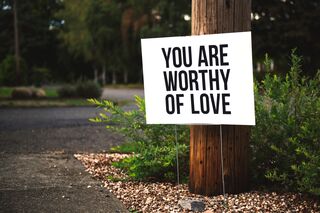Resilience
How Safe Are You Emotionally?
8 ways to identify how, when, and where you are free to be yourself.
Posted March 18, 2021 Reviewed by Davia Sills
Psychological safety is the foundation of emotional resilience and well-being.
In the 2004 comedy indie film I Heart Huckabees, the character Brad (played by Jude Law) seeks help from a pair of existential therapists, Vivian and Bernard (played by Dustin Hoffman and Lily Tomlin). They identify Brad’s compulsive storytelling about an encounter he had with Shania Twain as propaganda about himself:
“Keep everyone laughing so that maybe, quote, you don’t get depressed,” Vivian suggests.
“Well, what’s so great about depression!?” Brad shouts.
“Nothing, unless it holds the key to something you compulsively avoid, so it will never be examined or felt. Hence your behavior becomes repeated like a story…” Bernard replies.
The detectives ask Brad, “What do you think would happen if you didn't tell the stories? Are you being yourself?”
“How am I not myself?” Brad replies, and this continues to echo through his psyche as he realizes the extent of the performance he puts on each day to feel worthy.
It's a hilarious scene, but with a serious message: It’s hard to be ourselves if we don’t feel safe emotionally.
How are we not ourselves? What are the stories and propaganda we hide behind? Projecting an image of how we want others to experience us comes at a cost, is exhausting, and ultimately unsustainable.
When, where, and with whom are you safe to be yourself?
These eight questions can help you identify how emotionally safe you feel (subject to fluctuation):

Psychological safety is a foundation for resilience and well-being. When we feel safe, we can meet ourselves in an authentic way that allows us to connect with others. The safer we feel, the more we can share this with others. More safety, more stability.

Emotional safety emerges in relationships where we set boundaries and trust that we are accepted, where we can listen and share without fear, forgive and grow, and feel what it is like to love and be loved.
Building an internal sense of safety includes emotional self-care so we can regulate our own emotions. This means having healthy boundaries to interact with others and healthy boundaries with ourselves as well. It means being judicious with our attention and prioritizing those things that we value most deeply.

Emotional safety includes self-soothing that may involve spending time alone, just you, without distractions and without seeking to fill up from outside validation, likes, or personal achievements. It’s breathing, choosing to relax deeply, and smiling to yourself. It’s deciding to create a safe space within where you can be honest, kind, compassionate, forgiving, and light-hearted—creating a space within to make and own your mistakes, speak the truth, be creative, value your unique qualities, and trust you belong right here, right now, as you are.
Emotional safety, self-regulation, and emotional contagion will be discussed and experienced more deeply in my class Social Resilience: Healing Through Connection and Social Repair, part of an online class series, Sustainable Resilience.


